The 10 Most Extreme Lakes On Earth
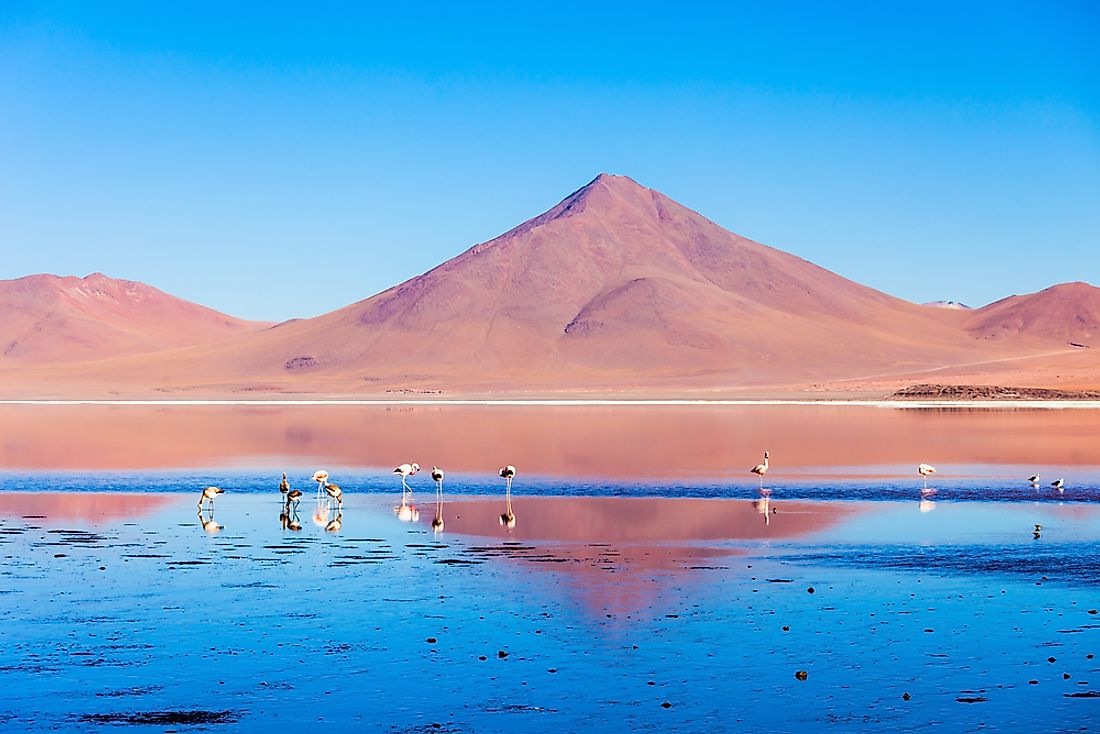
Although a lake is a water-filled area, localized in a basin, and mostly surrounded by land, not all lakes in the world are identical. Lakes differ by size, shape, depth, and composition. Some of the lakes are of extreme examples of nature, meaning that they have some unique properties that make them stand out among the rest. Some of these lakes have been mentioned below.
10. Jellyfish Lake, Palau
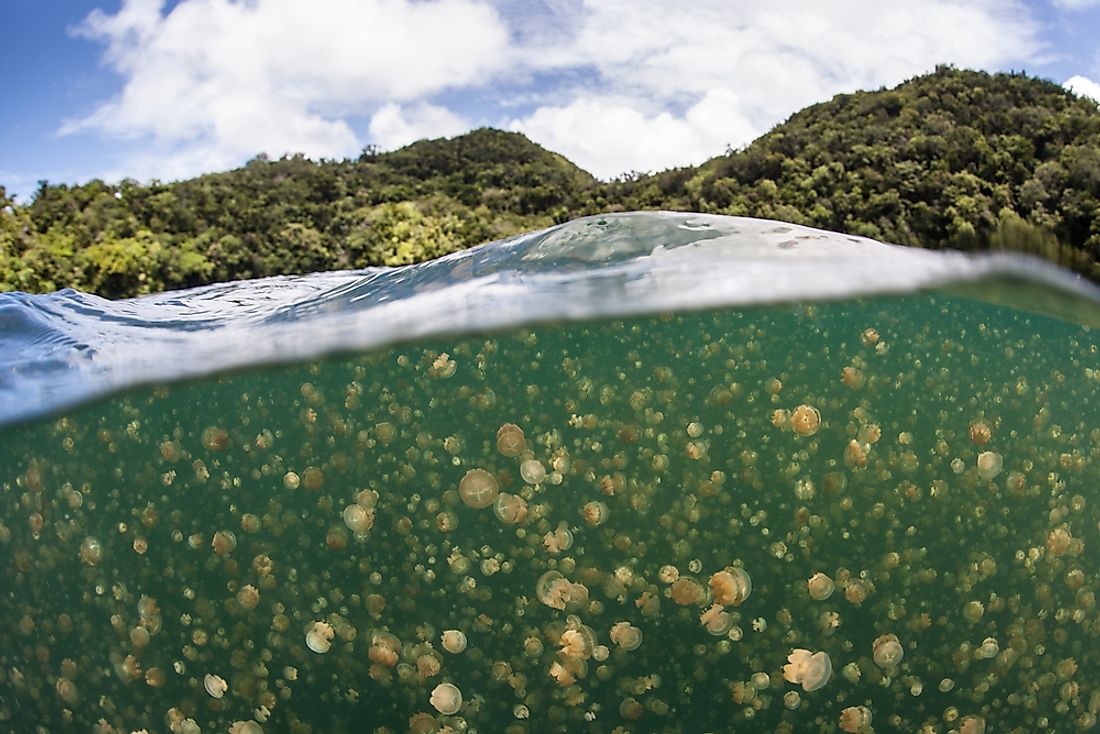
The Jellyfish Lake in Palau is unlike all other lakes in the world. This marine lake is located on the island of Eil Malk in the uninhabited Rock Islands region of the island nation of Palau. The lake lives up to its name as millions of golden jellyfish and moon jellyfish inhabit the lake. These jellyfish make daily migrations within the lake in different directions at different periods of the day. Tourists visiting the lake require special permits to access it. Snorkeling is available in the lake. Scuba diving is, however, not allowed here as bubbles from scuba tanks may harm the jellyfish inhabiting the lake. Also, hydrogen sulfide is produced at great depths of the lake and exposure to that can lead to toxicity and death of the diver.
9. Lake Colorada, Bolivia
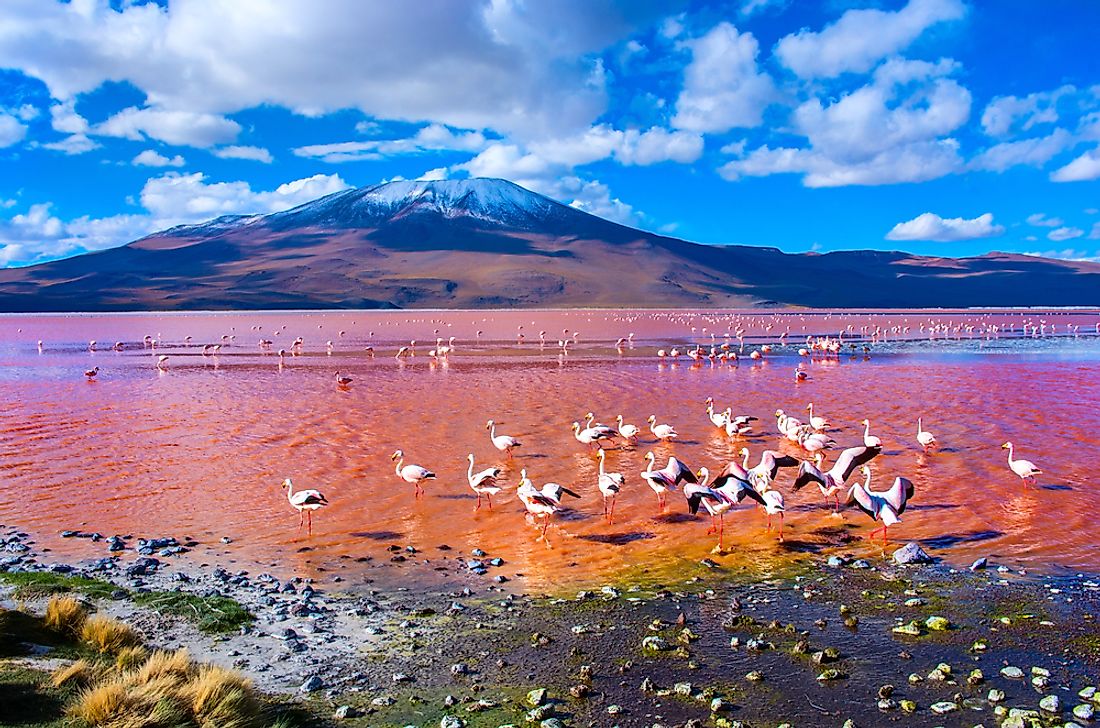
Also known as the Red Lagoon, the Laguna Colorada is a shallow salt lake located in Bolivia’s altiplano region. As the name suggests, the lake has reddish waters due to the presence of red sediment and red-colored pigmentation that is produced by algae living in the lake. It also has white colored islands made of borax that provides a stark contrast to the reddish waters. The picturesque lake is also noted for the large number of James's flamingos that thrive on the algae produced in the lake. Chilean and Andean flamingos also visit the lake but in lesser numbers.
8. Spotted Lake, Canada
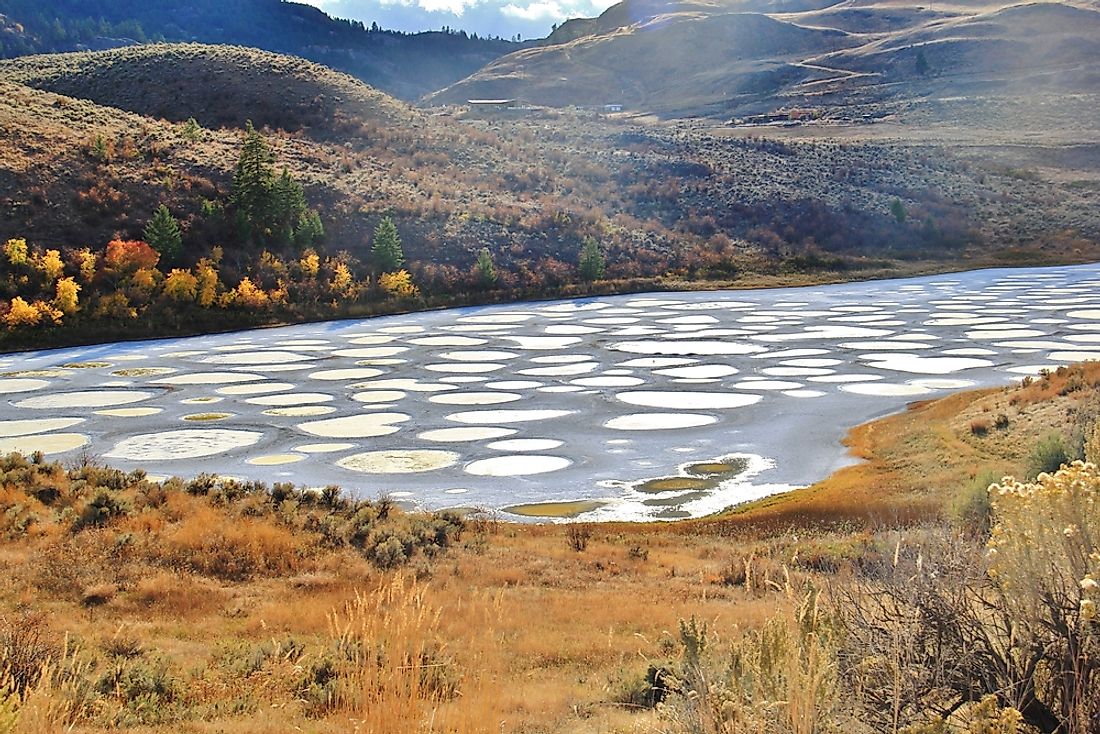
Located in the Similkameen Valley in the Canadian province of British Columbia, the Spotted Lake is a unique creation of nature. It is a saline endorheic lake with a rich concentration of different types of minerals like calcium, sodium bisulfates, and magnesium sulfate. When most of the lake’s water evaporates during the summer season, the bed of the lake appears as spotted due to the mineral deposits of various colors left behind. For a long time in its history, the Spotted Lake was regarded as a sacred site by the indigenous people of the region. The minerals of the lake were used in making ammunition during the First World War. Today, it is a popular tourist destination.
7. Boiling Lake, Dominica
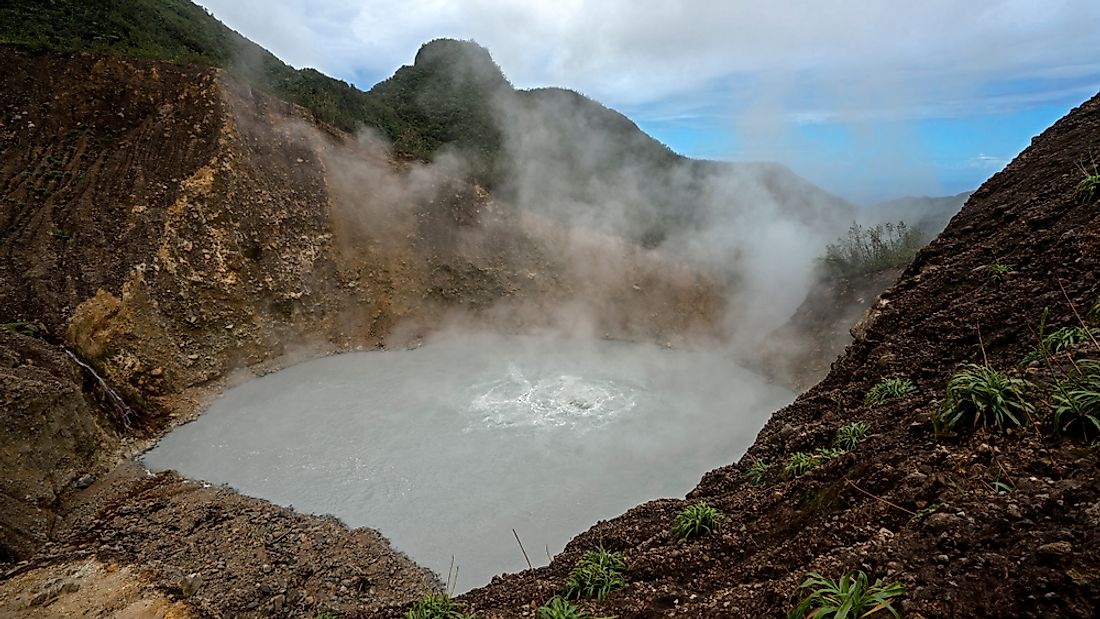
The remote Morne Trois Pitons National Park in Dominica is home to Boiling Lake, the world’s second-largest hot lake after New Zealand’s Frying Pan Lake. The Boiling Lake looks like a giant water pot with water cooking and steaming on a stove. The lake is supplied with water from two natural springs and rainfall. As the water enters the lake, the lava below heats the water to boiling point. The area around the lake is covered in a thick cloud of steam and the air is filled with the strong smell of sulfur. The entire landscape looks from out of the world. The Boiling Lake is about 200 to 250 feet in width. What makes the lake more interesting than the Frying Pan Lake is its remoteness. It is very difficult to access it and one has to hike through dangerous to see the lake.
6. Pitch Lake, Trinidad and Tobago
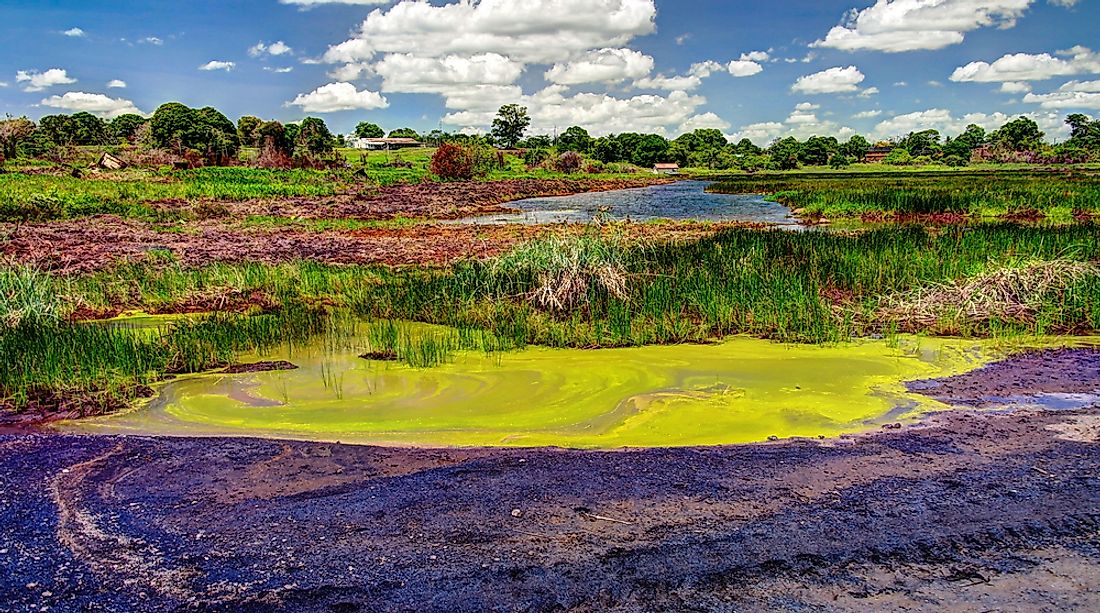
This lake is the world’s largest natural asphalt deposit. It is located in Trinidad’s southwestern town of La Brea. The 250 feet deep lake holds about 10 million tons of pitch. Both bacterial and archaeal microbial colonies are found here. The lake is believed to exist at the intersection of two faults where oil from deep underneath moves up to the surface. While the more volatile compounds evaporate, the asphalt remains behind. Today, the Pitch Lake is a popular place for tourism. A small museum has been built here showcasing the history of the lake. Asphalt mining is also an important economic activity in the region.
5. Dead Sea, Israel and Jordan
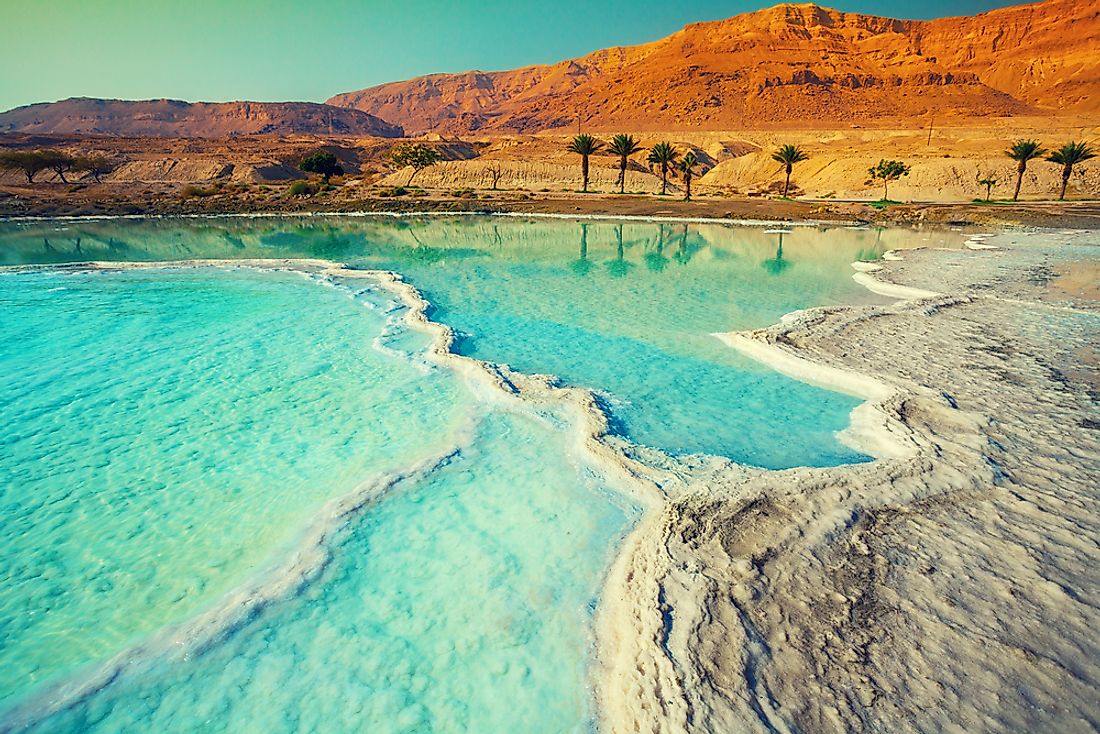
Although having the word “sea” in its name, the Dead Sea is actually a massive salt lake located at the border between Jordan and Israel. It is the world’s lowest elevation on land. The surface of the sea is located at an elevation of 1,412 below sea-level. The depth of the Dead Sea is about 997 feet. It is the world’s deepest hypersaline lake and is 9.6 times as salty as the ocean. Since no flora and fauna can flourish in the hypersaline waters of the Dead Sea, it is called “Dead”. The lake is a popular tourist spot as it offers the unique opportunity of floating in the saline waters of the lake.
4. Lake Karachay, Russia
This lake is known for all the wrong reasons. It is known as the world’s most polluted lake. In fact, if seen from the radiological point of view, it is the planet’s most polluted location. Lake Karachay is located in the Ural Mountains in Russia. It was used as the dumping site for radioactive waste generated from the Mayak nuclear facility. In 1990, the radiation level near the lake was so high that it could deliver a lethal dose to a human within just an hour. Today, the lake is fully infilled and acts as a dry nuclear waste storage facility.
3. Plitvice Lakes, Croatia
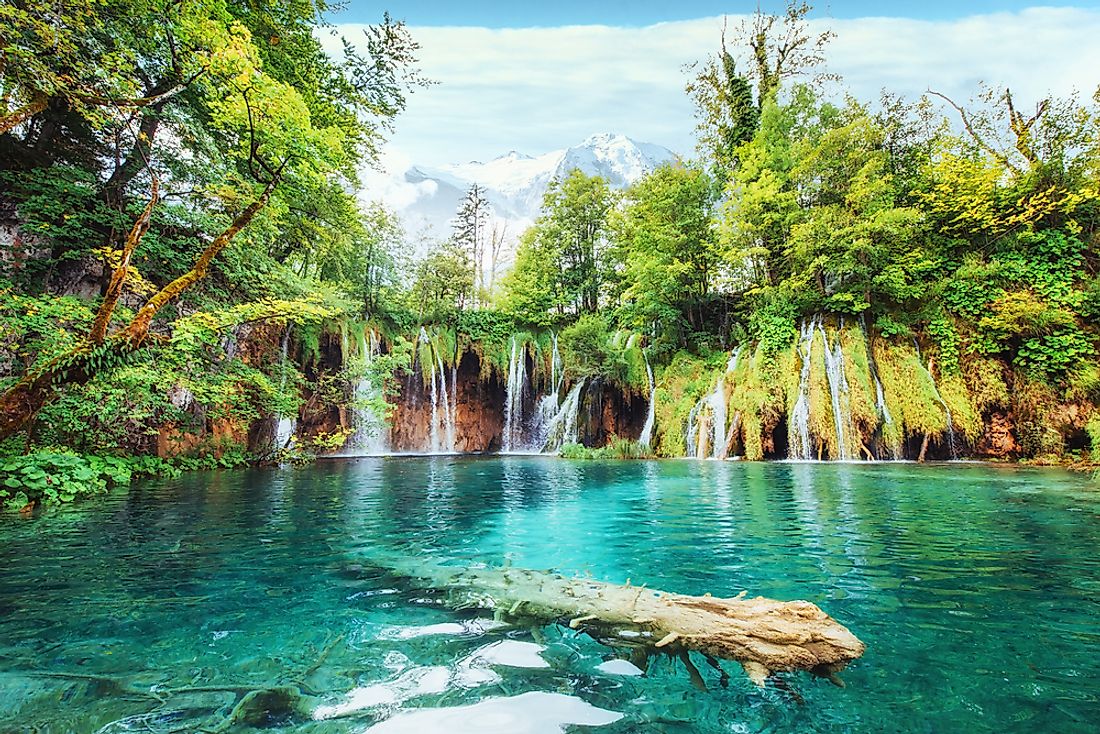
The Plitvice Lakes National Park, a UNESCO World Heritage Sites, is world famous for its jaw-dropping landscapes. It is located in central Croatia in a mountainous karst area and is visited by around 1 million tourists annually. The lakes of the national park are its star attraction. The lakes there are arranged in cascades formed by the confluence of several surface and underground rivers. Travertine dams separate the lakes. The color of the lakes varies from blue to green, azure or grey.
2. Lake Baikal, Russia
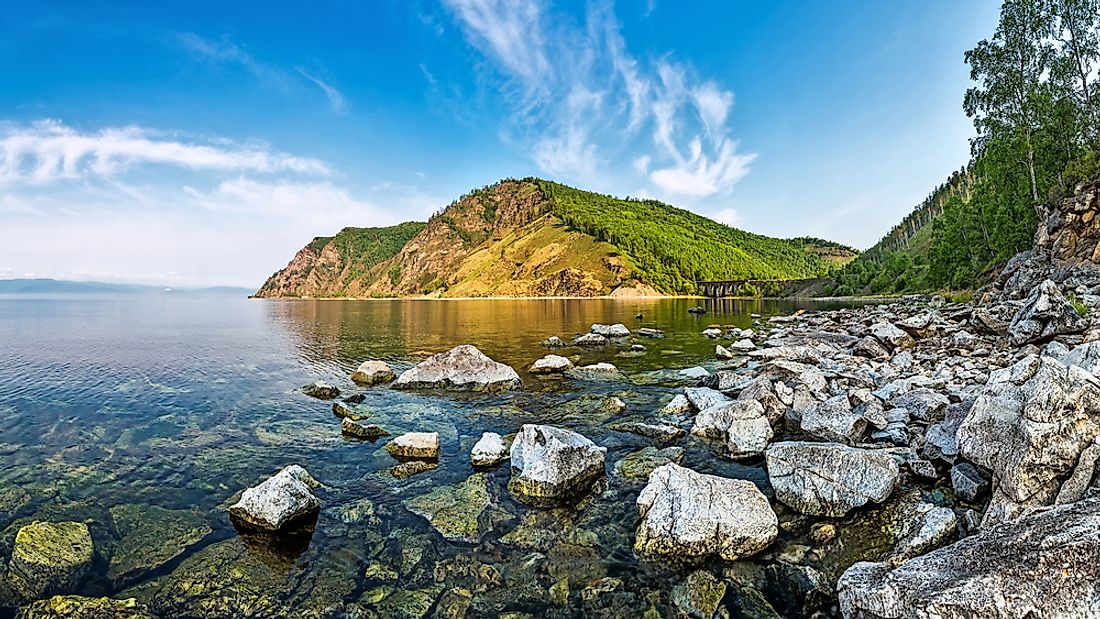
Lake Baikal holds many world records. It is the world’s largest freshwater lake in terms of volume. It is the deepest lake on the planet. It is even considered to be the oldest lake in the world and has some of the planet’s clearest waters. Lake Baikal holds 23,615.39 cubic km of water and has a maximum depth of 5,387 feet. It is located in southern Siberia. The lake is also home to many species of endemic flora and fauna. Recognizing the importance of the lake, the UNESCO declared it as a World Heritage Site in 1996.
1. Loktak Lake, India
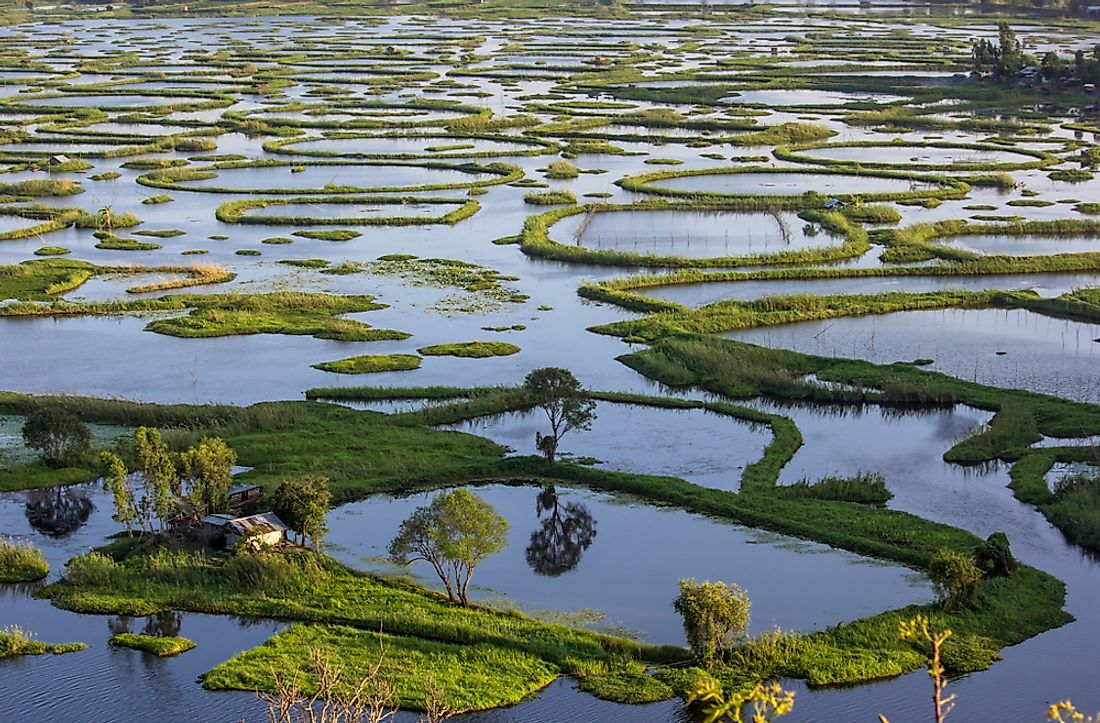
Another spotted lake but with spots of a different nature can be seen in the Indian state of Manipur. The Loktak Lake is a freshwater lake that is famous for the phumdis floating over it. The phumdis are mainly ring-shaped or circular small masses of vegetation, organic matter, and soil in various decomposition stages. The phumdis can be as large are 40 square km. The world’s only floating national park, the Keibul Lamjao National Park, is located on this phumdi. It is home to the endangered Sangai, a subspecies of the Eld’s deer. The Loktak Lake is an important source of water for Manipur. It is also an important fishing area. Sadly, human activities threaten the delicate ecosystem of the lake.











